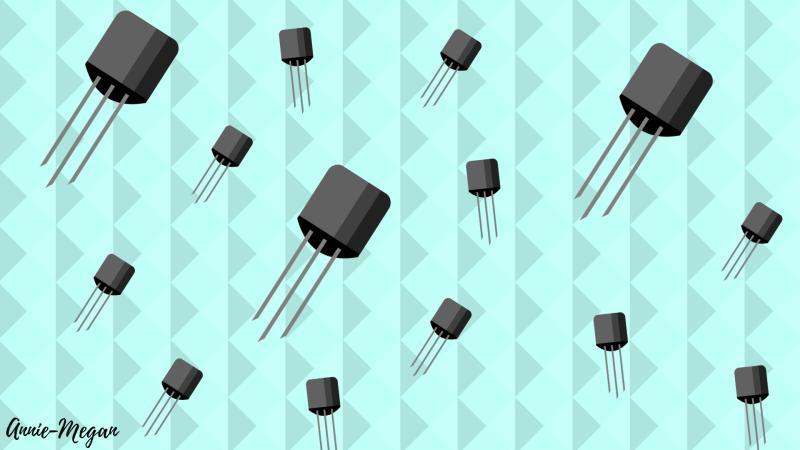
All electronic devices that we use today have components made of semiconductors, mostly silicon. In recent years, gallium nitride (GaN), another semiconductor, is making its way into electronics as it is better suited for high power and high-frequency applications. Since GaN technology is still evolving, and it is less expensive to set up a foundry for manufacturing, it is touted to be India’s opportunity to mark its presence in the niche field of semiconductors.
A group of faculty members at IISc have developed India’s first-ever e-mode gallium nitride power transistor, whose performance is comparable to some of the best reports till date. This interdisciplinary team of investigators spread across three departments (Department of Electronic Systems Engineering, Department of Electrical Engineering and Center for Nano Science and Engineering) includes Prof Mayank Shrivastava, Prof Srinivasan Raghavan, Prof Navakanta Bhat, Prof Digbijoy Nath, Prof G. Narayanan, Prof V. John, Prof R. Muralidharan, Prof. K.N. Bhat, Prof. M.M. Nayak, Prof S.K. Selvaraja and Dr Madhusudan Atre.
Power electronic systems that operate at high power and frequencies are projected to use specific transistors called High Electron Mobility Transistors or HEMTs. These transistors are made with gallium nitride, and they can operate at very high voltages, switch ON and OFF faster, and occupy less space when compared to silicon-based transistors. They find applications in majority of electronics that we see around such as electric vehicles, chargers for laptops and even military RADARs and cell phone base stations.
The projected market for power devices is set to reach USD 25 billion by 2022 with an exponentially growing GaN HEMT market touching USD 423 million in 2023. With a growing market for electric vehicles in India, such an indigenous development for manufacturing these transistors in India will save import costs and make us self-reliant for transistor technology.
This project has been funded by the Advanced Manufacturing Technology (AMT) initiative of Department of Science and Technology (DST), Govt. of India. The principal objective of this initiative, as far as this project is concerned, is to enable indigenous development of technologies, which are vital to the nation’s economic and strategic growth. The GaN activity in IISc was seeded by the Ministry of Defence (MoD), which was subsequently supported by the Ministry of Electronics and Information Technology (MeitY) for the development of GaN based power electronics. These initiatives by MoD and MeitY on materials and devices have helped lay the platform for this advancement.
“IISc has been involved in the development of GaN technology since 2009. We are a group of nine faculty members and over 20 research students, spread across three departments, working towards a common goal of making India self-reliant in GaN technology. This development is a key milestone in this direction, which we hope will feed into India’s goal of setting up its own GaN foundry in the near future,” says Prof. Mayank Shrivastava.
Challenges with e-mode HEMT
A High Electron Mobility Transistor (HEMT) has a conducting channel between two terminals, called the source and the drain, and the current passing through it is controlled by a third terminal called gate. The HEMT channel is conducting, or ON, unlike some of the other transistors, so current can pass through it as soon as it is powered on. A negative voltage needs to be applied at the gate to stop the flow of current. However, for a transistor to operate reliably in power electronic circuits, it needs to be in the OFF state when no gate voltage is applied, which can then be turned ON by applying a voltage at the gate. Such operation is called e-mode or enhancement mode operation.
Commercially available transistors use various techniques to keep them in a normally OFF state. One such approach is to completely recess the channel, which results in reducing the channel size. However, this affects the stability, performance and reliability of the device. Another approach is to use a gate made of gallium nitride, doped with impurities that deplete electrons from the channels and switch it OFF. The challenge with this method is that the gate and the channel form a diode, which starts conducting current when a voltage higher than a certain value is applied at the gate, making them unusable. Therefore, there was a need to build a new kind of e-mode HEMT, which is in the OFF state by default and works like any other commonly used transistor. Besides, it must be stable, reliable, efficient and can operate in the desired high voltage.
The New HEMT Technology Developed by IISc
With the hard work of two years paying off, the team at IISc were able to develop the first-ever e-mode gallium nitride power transistor from India that operates at 600V. It has better performance and power handling capacity than similar devices proposed by other researchers, some of which are now in the market. “Given that the 600V class e-mode HEMT technology recently got commercialised, our competition was with industry-standard state-of-the-art power gallium nitride HEMT technology. Keeping system level requirements in mind, we have developed both e-mode HEMT as well as GaN Schottky diodes,” says Prof. Shrivastava. Their work has been published in the IEEE Transactions on Electron Devices.
The researchers explored oxides of copper, nickel, aluminium and titanium for using them to make the gate of the improvised HEMT. They zeroed in on titanium oxide as it had minimal leakage current and provided better control of the voltage needed to turn the transistor ON. They finally used aluminium titanium oxide as the percentage of aluminium could be controlled during the fabrication process, which acts as a ‘control knob’, regulating the voltage needed to turn the transistor ON. Since aluminium titanium oxide is stable, it results in high reliability of the transistor.
Interestingly, the addition of aluminium in the titanium oxide was an accidental discovery! “We were experimenting with titanium oxide, trying to finetune it to achieve optimal characteristics. A particular lot that we had developed displayed characteristics totally inconsistent with, but better than, any previous lots. Investigation showed that there had been aluminium contamination, after which, we explored the use of aluminium doping in titanium oxide,” explains Prof Shrivastava.
The researchers carried out rigorous experiments, processed over 200 process lots to develop this technology, and ran quality tests on more than 150 transistors per manufacturing lot to build confidence in the manufacturing platform. They found that the gallium nitride transistors with aluminium titanium oxide gate stayed in e-mode and showed a 100-fold reduction in the leakage current and better gate control, as compared to other conventional GaN HEMTs. Besides, the current carrying capacity of the transistor when it is turned ON was found to be at par with industry standards.
In the light of ongoing innovation by this team in IISc, the researchers are discussing a proposal with the Government of India to set up a commercial gallium nitride semiconductor foundry in India with an initial investment of about ₹3000 crores.
“Developments such as this one, by the team at IISc, are key to the success of the Advanced Manufacturing Technology initiative,” concludes Prof Srinivasan Raghavan, who is coordinating the fab efforts.
Editor's note : The above article has been modified to add funding and support information for the work, as per the request of the research team.
